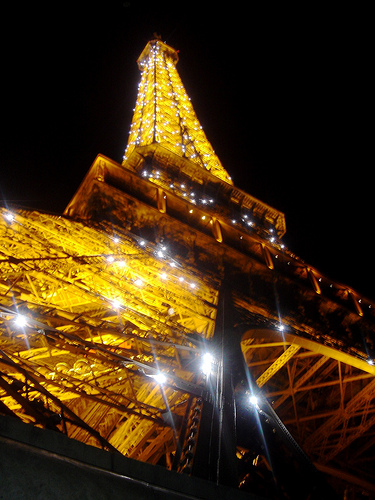How to shoot photos around bright lights indoors and during nighttime

Having a lot of light is typically good for photography, but sometimes you have to be wary of it. Too much light can wash out subjects in a photo. Here are a few tips to keep in mind when you have a lot of light in the room but want to control it for your photo.
1. Avoid flash: While it might enhance some features hidden in the dark, either indoors or outside at night, it will also diminish the radiance and brightness of the already-present light. Turn the flash off and see how well you do without the unnatural light function.
2. ISO: This might take a bit of experimentation. If the setting is significantly bright, you might be able to get away with an ISO 400 (maybe 200). But if its a lot of bright lights indoors (like holiday lights) or outdoors at night (like the Eiffel Tour above), the average ISO required should be 800. You can try 1600 (or higher if your camera allows it), but then you risk a lot of noise.
3. Noise reduction: With a high ISO and lack of natural light, the fast speed might bring a lot of noise with it. You could either go with the higher ISO and try to reduce noise in a photo-editing program on your computer, or you could try getting access to a digital camera that comes with a preset noise reduction function. DSLRs are far better than point-and-shoots in this regard.
4. Turn off Auto White Balance: I'm very anti-flash, so I tend to turn it off indoors. Even with enough light in the room, there's still usually a side-effect: a warm, yellow hue over the frame. This will take some adjusting with your white balance settings, but usually AWB induces all whites to turn yellow with natural light indoors.
5. Shoot two exposures: This could mean a number of things. You could experiment with ISO settings, with or without flash, and shoot different objects in focus to get the most sharp frame possible. Then you could piece the two images together in a photo-editing program.
6. Use a tripod: If you're troubled by camera shake after all of these steps, you'll need to use a tripod or some other kind of sturdy service nearby. If its especially dark or the object is difficult to capture, considering using the camera's timer or a remote to set off the exposure.
Do you have any extra tips to share when photographing indoors around a lot of bright lights?
